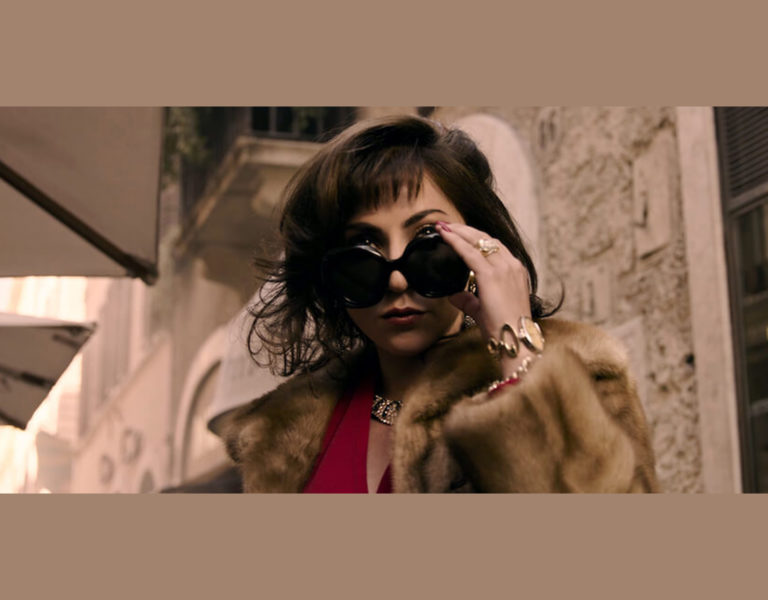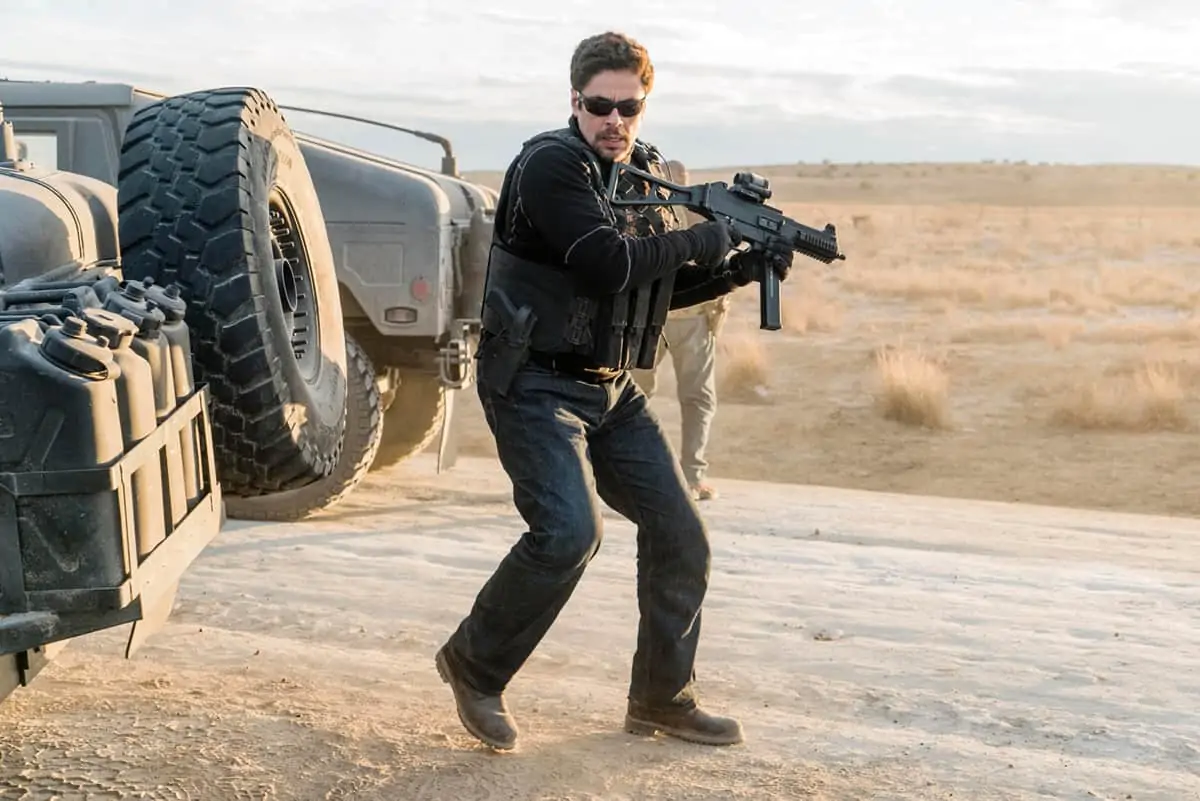PAINTING BY CANDLELIGHT
The rise of one of France’s most emblematic figures is the subject of Ridley Scott and Dariusz Wolski ASC’s latest collaboration. The cinematographer reveals how capturing Napoleon’s epic battle scenes felt akin to shooting a rock concert.
When it comes to their creative partnership, filmmaker Ridley Scott and cinematographer Dariusz Wolski ASC have traveled to outer space for Prometheus, the Middle Ages in Kingdom of Heaven, and contemporary times for The Counselor. Napoleon marks the first time that the duo has visited 18th-century France together.
For the DP, the new setting required a different type of visual research and inspiration, such as classical French paintings by the likes of Jacques-Louis David. “There is a tremendous amount of data about Napoleon,” he notes. “Actually, there is so much that it gets confusing because there are so many facts and interpretations that it is hard to compare.”
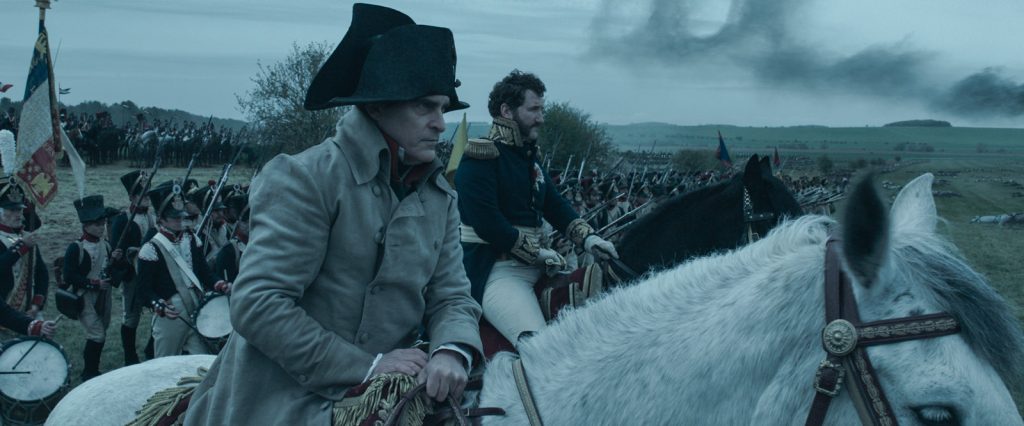
Another major visual reference point was The Duellists, Scott’s feature director debut which took place during the Napoleonic Wars. The pair often watched the 1977 film, which led to a conversation about their shooting approach. “There was a funny story about it because [Ridley] was saying, ‘Look at this. It was one camera,’” says Wolski. “I said, ‘I should shoot one camera.’ He said, ‘No. You’re too good. You can shoot more than one camera.’”
Multiple cameras enable Scott to get the necessary coverage without having to deal with multiple setups which would slow down the production. When shooting a standard dramatic scene, with anything from two to 30 people, the filmmakers would opt for a four-camera setup. However, for the intense battle scenes, far more cameras were required.
“Ridley is setting up a huge event,” Wolski explains. “You have cannons, horses, armies, soldiers, and a huge landscape. It’s like you’re shooting a rock concert. You need 12 cameras because the guys are going to play and go home. Another issue is horses. They can only go full speed three or four times and then they’re not performing as well. You can see the difference.”
There is a skill in avoiding the different cameras capturing each other. “You can do staging that accommodates them. Some camera operators are horrified at shooting different directions but it’s how you approach the lighting. If you are true to the source – which in this particular case it can either be a fireplace, candles or big window – you can use all of the light sources that they have there. Or if you light the space, it’s a matter of picking out the angle and staging it so that the stuff looks good.”’
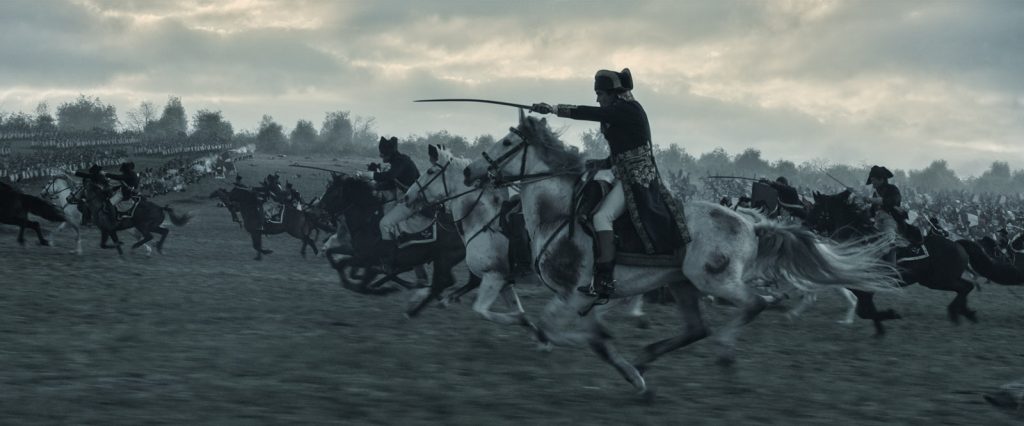
Heart of the action
As Wolski mentions, there are no shots but rather ‘events’ in Napoleon – so-called because “Ridley is a painter and observer. Sometimes we use a single camera as a narrative tool but most of it are paintings and showing the scale of it. The biggest challenge was probably the Battle of Toulon which was at night which is hard. Ridley doesn’t like to shoot nights, so we had to be finished in half a night. That’s pressure. We built a port.”
Most of the film was captured on the ARRI Alexa Mini LF and additional camera were Alexa LFs. Coming in handy for the ridden battles were small DJI cameras, which were given to one of the stunt riders to take the viewer to the heart of the action.
The lens package is tried and true. Wolski likes the “fantastic” short Angénieux EZ zooms, which can be handheld and work especially well for daytime shooting. “They’re sharp but at the same time they do well with blown out light and overexposure,” he says.

For night and all of the candlelit scenes, the cinematographer used old vintage Panavision Super Speeds – “the same lens that Gordon Willis ASC used” – not going longer than 100mm. What’s more, no lens was favoured over the others. “That isn’t possible when you have five or six cameras! The lens should be used to tell the story, the story should not be told through the lens. Some people make that mistake.”
Most of the time Wolski tried to go with the natural lighting. “Funnily enough we were lucky with weather,” he states. “We always shot rain or shine. People control all of the light, and everything looks perfect but it’s not exciting. I always believe in embracing nature. Don’t mess with it. Your resources are limited. You can hang only so many silks.”
Candles were a major light source, but Wolski is no stranger to shooting them, having photographed them since the first Pirates of the Caribbean instalment. To complement these, he mainly used LEDs rather than tungsten because the latter would prove too powerful next to candlelight. There were a few exceptions where he opted for tungsten lights at night, but only to indicate a distant glow.
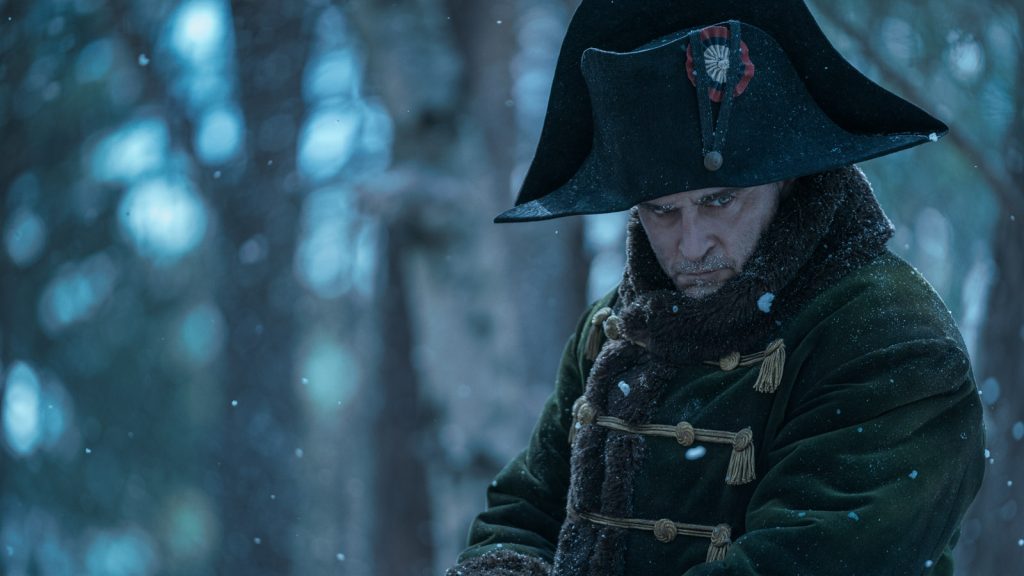
He elaborates: “When Napoleon gets to Moscow, falls asleep and wakes up, he comes out of the house and the whole of Moscow is on fire. What we did was put tons of tungsten lights on dimmers way in the distance on cranes. It was interactive lighting and then Charley Henley [visual effects supervisor] went in and turned it into Moscow on fire.”
Atmospherics were also an important tool. While there has been lots of smoke in Scott’s previous films, snow was key to the visuals in Napoleon. Sometimes it would even be physically snowing during shooting, which Henley would have to extend.
“We used smoke dramatically too,” says the DP. “We would smoke the place up so that the cavalry could come out of nowhere. Neil Corbould [special effects supervisor] is an expert in that. There were a lot of different techniques [that we utilised].”

Storyboarding for success
The aspect ratio was always going to be 2.35:1. Wolski and Ridley didn’t even need to discuss it because they are so used to it, but the DP admits he would love to do a film with a different format, like a square.
Driving the shot composition are thumbnail sketches known as ‘Ridleygrams’. Rather than hiring a board artist, Scott storyboards his films himself. Wolski, who calls Scott one of the hardest-working directors in the business, explains how his collaborator starts his storyboards very early on, with a basic script. In those early stages, while he’s doing the storyboards, he is also developing the script.
“Then you start looking at locations and all of the storyboards adjust, adapt, and change,” the DP continues. “It’s a constant process. The storyboard is his way of thinking and seeing the film. We all have to come in and follow-up on how he thinks.
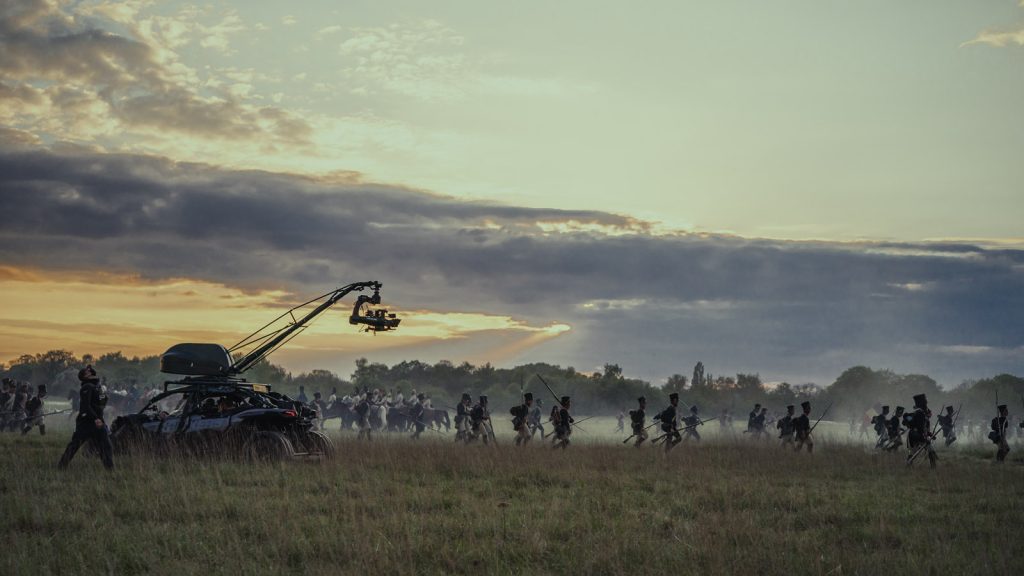
“Joaquin Phoenix was influential in terms of the script and there was a constant discussion about Napoleon Bonaparte because the character is so complex and hard to portray. We were trying not to make a historical movie but an impression.”
Prep began as soon as House of Gucci wrapped in May 2021, before which Scott and Wolski had already been to Malta to get a grasp of locations. Because of Omicron, the shoot was pushed back another three weeks, which gave them the luxury of more prep time: a good two months in total. All together, principal photography was 65 days.
Unlike The Last Duel, which was shot in France, Napoleon made use of English locations. “That is the genius of Arthur Max [production designer] and Charley Henley,” observes Wolski. “We decided to shoot in England to consolidate everything in one place. We found huge English estates and some of them were dressed as they could be for real. I can’t tell you exactly how many. Some of them we used as a base like the first two floors. What is different between France and England is rooflines. That was Charley. We changed the roofs and that’s how we got away with it.”

Military precision
Five different battles had to be mapped out and Max created a 10×8-foot model of the landscape to help them plan. Wolski compared their process to setting up a military event: “We all sit there, discuss what’s going to happen and which ways are the armies going to go. Then you say, ‘That part is going to be shot at this location.’
“With Austerlitz it is obvious when you see the model. Napoleon is on a hill looking down at the ice lake covered with snow and you’re going to have a village there. The scale of it is impossible. What we’re doing is the top of the mountain and all of the Napoleon stuff in one location; the over his shoulder stuff is being shot technically on an airfield. We had snow and built a little village and then there was a lake. This way with a big wide shot you can establish the geography, so you understand what is going to happen. Napoleon and the French Cavalry has lured the Russian and Austrian armies to charge towards the lake. He fired cannons, broke the ice, and it opened up. It’s a bit exaggerated because some historians claim it was a coincidence that Napoleon quickly realised that he had an advantage, but that’s a debatable story.”
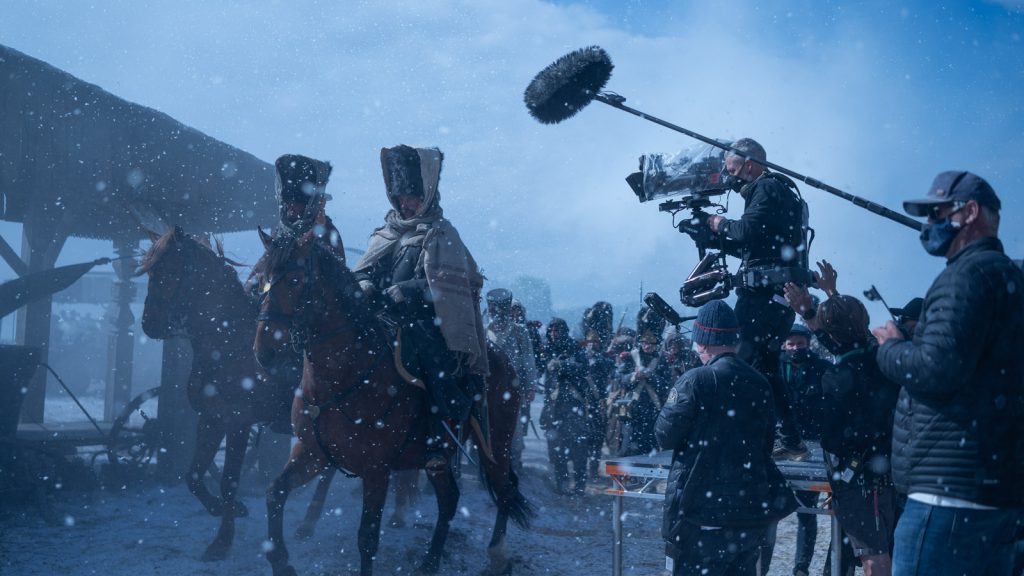
The most crucial crew member was A-camera operator Daniele Massaccesi. Massaccesi is a DP in his own right, having shot The Matrix Resurrections, but as long-time collaborators, Wolski managed to twist his arm to bring his expertise on Napoleon.
“Daniele was key because he’s so used to using multiple cameras,” explains Wolski. “All of the other operators were amazing. Jonathan Spencer was my gaffer, and it was the first time I used him. He was incredible, flexible and thinks quickly. Very innovative. I had never used key grip Darren Holland before, but he came highly recommended. Absolutely brilliant.”
Other important collaborators for Wolski include his travelling DIT Ryan Nguyen, who he dubs “an extension of my brain”, and DI colourist Stephen Nakamura of Company 3, with whom he has worked since the first Pirates of the Caribbean outing. “A lot of [Napoleon] is quite desaturated, which is something Ridley generally likes,” Nakamura says, “but he wanted to make sure certain colors pop.” So, while a lot of the film has a very cool look, warm colours, such as the flag, skin tones and flames do declare themselves. “I use parallel nodes and layer mixers to come in underneath the grade and bring out just specific colours in particular places,” he says of his technique within Blackmagic Design’s DaVinci Resolve.

Wolski was impressed by Joaquin Phoenix’s performance as Napoleon. “I’ve worked with a lot of actors in my life, but I’ve never worked with an actor who shows up onset 15 minutes before crew call time. I asked him, ‘What are you doing here?’ He said, ‘I’m just checking things out.’ He is half Napoleon and half conversing. The way he operates is so beautifully unpredictable because it’s like he soaks up the energy.”
Napoleon is a painting come to life, says the cinematographer: “It is the most painterly, period thing I can imagine. It was an incredible adventure. I hope people enjoy it as much as we enjoyed making it.”


